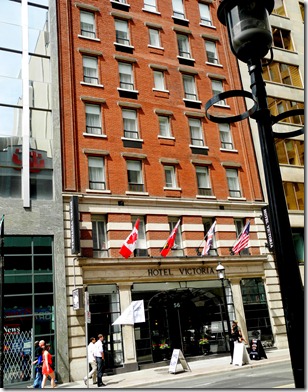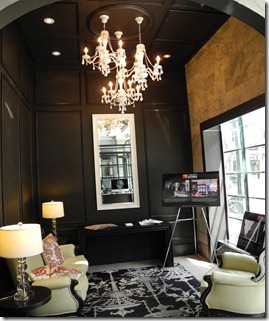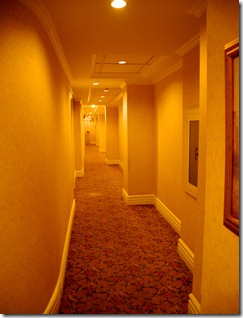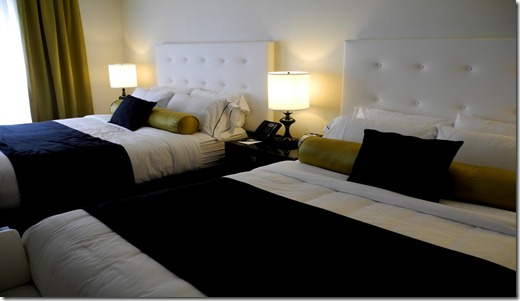During the “Doors Open Toronto” weekend, I had an opportunity to visit the interior of the Hotel Victoria, located at 56 Yonge Street. As a teenager, I rode past it many times on the old square-shaped Peter Witt streetcars that plied Yonge Street prior to the opening of the subway in 1954. In recent years, I have walked past the hotel’s attractive facade, but had never been inside its doors. The staff that greeted visitors on the “Doors Open” weekend were friendly, knowledgeable and very helpful. I thoroughly enjoyed my visit.
The hotel was built by Frederick Mossop, who began his career as an hotel clerk. He purchased the property on Yonge Street in 1906. The site possessed a narrow frontage on the street, only 40 feet wide, but with a depth of 112 feet. Mossop hired the architect J. P. Hynes to design a fireproof building, as the disastrous fire of 1904, which destroyed much of Toronto’s financial District, remained fresh in his memory. It required three years to complete the building. Naming the hotel after himself, the eight-storey hotel opened in 1909, containing 48 rooms, completed at a cost of $250,000.
The hotel was constructed on a foundation that extended down to the bedrock, the first foundation of this type built in Toronto. The steel frame of the structure, as well as the elevators, were protected with non-flammable materials. The interior staircases were of iron, with slate steps. All of the windows possessed metal sashes with thick fireproof glass.
The facade of the building, despite being only 40 feet in length, appears wider than it actually is. The unadorned style, with straight lines and small windows help create this illusion. The red-bricks are attractive, the cut stone trim around the windows adding a touch of elegance.
During the years ahead after it opened in 1909, the hotel prospered. It played a major role in the life of the city when it served as an emergency hospital during the flu pandemic of 1918. However, business dwindled as the years progressed, and it 1927 the hotel closed. It was sold to George and Mathew Elliott. The two brothers renovated the hotel and reopened it as the Hotel Victoria.
During the Second World War, the hotel established the Churchill Club to raise funds for the war effort. During the years following the war, the hotel again began to lose business. In the 1950s and 1960s, profits from the establishment waned to the extent that the hotel became the haunt of cigar-smoking prospectors, Bay Street stockbrokers down on their luck, and a few “ladies of the evening.” Paul Phelan, a real estate developer, rescued the hotel from its fate in 1971. Paying $10,000 for the premises, he assumed all its debts. He then spent over $2 million to renovate the old hotel, and reopened it as a boutique establishment, the type that were becoming popular in New York and London. As a result, during the 1970s and 1980s, the hotel once more became profitable.
In 1984, Phelan sold the hotel to Charles Goldsmith, another real estate developer, for the sum of $2.5 million. Goldsmith invested another $2.5 into the hotel to upgrade it to conform to the new provincial fire regulations and required mechanical systems. He restored the hotel’s original marble walls and pillars, as well as the plaster cornices on the ceilings. The hotel reopened in March of 1986. In 1997, the ownership of the hotel again changed hands. It was purchased by the Silver Hotel Group. In 2011 they renovated the lobby and the guestrooms.
Today, the hotel offers a unique and intimate place to stay, with attractive rooms and a location near the cultural amenities and tourist attractions of the city. Its pleasing facade remains an enduring reminder of Toronto’s past, accommodating clientele in a modern setting.
Hotel lobby Hotel hallway
A hotel guestroom
To view the Home Page for this blog: https://tayloronhistory.com/
To view previous posts about movie houses of Toronto—old and new
https://tayloronhistory.com/2013/10/09/links-to-toronto-old-movie-housestayloronhistory-com/
To view links to other posts placed on this blog about the history of Toronto and its heritage buildings:
https://tayloronhistory.com/2013/10/08/links-to-historic-architecture-of-torontotayloronhistory-com/
Recent publication entitled “Toronto’s Theatres and the Golden Age of the Silver Screen,” by the author of this blog. The publication explores 50 of Toronto’s old theatres and contains over 80 archival photographs of the facades, marquees and interiors of the theatres. It also relates anecdotes and stories from those who experienced these grand old movie houses.
To place an order for this book:
Theatres Included in the Book
Chapter One – The Early Years—Nickelodeons and the First Theatres in Toronto
Theatorium (Red Mill) Theatre—Toronto’s First Movie Experience and First Permanent Movie Theatre, Auditorium (Avenue, PIckford), Colonial Theatre (the Bay), thePhotodome, Revue Theatre, Picture Palace (Royal George), Big Nickel (National, Rio), Madison Theatre (Midtown, Capri, Eden, Bloor Cinema, Bloor Street Hot Docs), Theatre Without a Name (Pastime, Prince Edward, Fox)
Chapter Two – The Great Movie Palaces – The End of the Nickelodeons
Loew’s Yonge Street (Elgin/Winter Garden), Shea’s Hippodrome, The Allen (Tivoli), Pantages (Imperial, Imperial Six, Ed Mirvish), Loew’s Uptown
Chapter Three – Smaller Theatres in the pre-1920s and 1920s
Oakwood, Broadway, Carlton on Parliament Street, Victory on Yonge Street (Embassy, Astor, Showcase, Federal, New Yorker, Panasonic), Allan’s Danforth (Century, Titania, Music Hall), Parkdale, Alhambra (Baronet, Eve), St. Clair, Standard (Strand, Victory, Golden Harvest), Palace, Bedford (Park), Hudson (Mount Pleasant), Belsize (Crest, Regent), Runnymede
Chapter Four – Theatres During the 1930s, the Great Depression
Grant ,Hollywood, Oriole (Cinema, International Cinema), Eglinton, Casino, Radio City, Paramount, Scarboro, Paradise (Eve’s Paradise), State (Bloordale), Colony, Bellevue (Lux, Elektra, Lido), Kingsway, Pylon (Royal, Golden Princess), Metro
Chapter Five – Theatres in the 1940s – The Second World War and the Post-War Years
University, Odeon Fairlawn, Vaughan, Odeon Danforth, Glendale, Odeon Hyland, Nortown, Willow, Downtown, Odeon Carlton, Donlands, Biltmore, Odeon Humber, Town Cinema
Chapter Six – The 1950s Theatres
Savoy (Coronet), Westwood
Chapter Seven – Cineplex and Multi-screen Complexes
Cineplex Eaton Centre, Cineplex Odeon Varsity, Scotiabank Cineplex, Dundas Square Cineplex, The Bell Lightbox (TIFF)




![cid_E474E4F9-11FC-42C9-AAAD-1B66D852[1] cid_E474E4F9-11FC-42C9-AAAD-1B66D852[1]](https://tayloronhistory.com/wp-content/uploads/2014/10/cid_e474e4f9-11fc-42c9-aaad-1b66d8521_thumb5.jpg)

